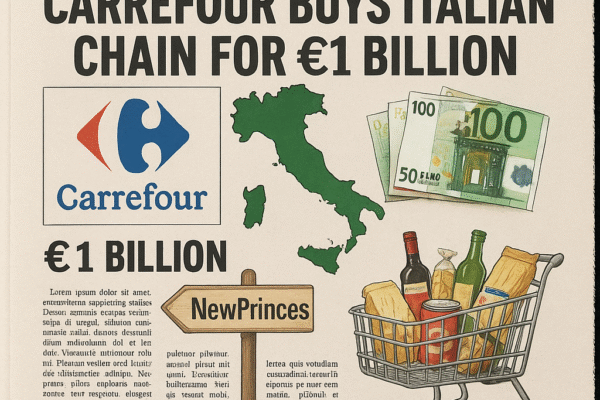In a strategic move that could reshape wealth management, State Street Global Advisors (SSgA) and Carlyle Group are exploring a landmark partnership to bridge public and private markets for retail investors. The proposed collaboration – revealed through preliminary discussions reported by Bloomberg – would combine SSgA’s $4.7 trillion index-fund empire with Carlyle’s $441 billion alternative investment platform[1][3][4]. This initiative reflects accelerating industry efforts to democratize access to private equity, credit, and real estate assets traditionally reserved for institutions. As regulatory filings and product launches signal a tipping point in retail alternatives, the partnership’s success could unlock over $1.5 trillion in individual investor capital for private markets within a decade[3][6].
Strategic Rationale: Complementary Strengths in a Shifting Landscape
State Street’s Retail Distribution Powerhouse
With $3.9 trillion in retail assets under management, SSgA brings unparalleled scale in passive investment vehicles and retirement account penetration[3]. The firm has aggressively expanded its private markets strategy under CEO Yie-Hsin Hung, launching three alternative partnerships in Q1 2025 alone – including a groundbreaking private credit ETF with Apollo Global Management[2][8]. This follows SSgA’s 2024 introduction of target-date funds featuring 10% private asset allocations, which attracted $14 billion in inflows despite market volatility[2]. The Carlyle partnership would leverage SSgA’s DC plan relationships covering 27 million U.S. workers, providing instant access to a captive retail audience[8].
Carlyle’s Institutional-to-Retail Pivot
Facing slowing institutional fundraising (2024 net inflows of $10.4 billion lagged Blackstone’s $15.1 billion), Carlyle has prioritized retail channels under CEO Harvey Schwartz[3][7]. The firm’s retail capital raising surged 65% year-over-year in 2024, reaching $8.2 billion through vehicles like interval funds and REITs[3][6]. Regulatory filings reveal Carlyle’s preparation for retail product structuring, including SEC exemptions allowing variable fee share classes – critical for aligning with 401(k) platforms[3][4]. By partnering with SSgA, Carlyle gains access to the largest U.S. target-date fund manager (controlling 34% market share) while avoiding costly direct-to-consumer distribution builds[8].
Product Architecture: Blending Liquidity and Illiquidity Premiums
Hybrid Fund Structure
Early discussions center on an interval fund combining 85% public market ETFs with 15% private asset exposure – mirroring SSgA’s Apollo collaboration but with Carlyle’s broader alternatives expertise[1][8]. The structure aims to balance daily liquidity needs (through listed ETF components) with multi-year private market lockups. Carlyle would contribute assets from its $158 billion corporate private equity portfolio and $74 billion real estate platform, while SSgA handles index replication and daily NAV calculations[4][7].
Fee Compression Dynamics
Industry analysts project management fees of 45-55 basis points – a 60% discount to traditional private equity funds but triple SSgA’s core ETF fees[3][6]. The blended model relies on scale: at $50 billion AUM (SSgA’s stated 5-year target), the partnership could generate $275 million annually despite lower margins. This fee structure mirrors Capital Group/KKR’s recent 60/40 public-private interval funds, which attracted $4.2 billion in their first month[6].
Industry Context: The Great Retail Land Grab
Competitive Moves in Alternatives Democratization
The SSgA-Carlyle talks occur amid a flurry of cross-industry partnerships:
- BlackRock’s 2024 acquisition of Global Infrastructure Partners ($100 billion AUM) enabled rapid rollout of private-infrastructure SMAs for RIAs
- Vanguard’s discussions with Blackstone and Carlyle (revealed in March 2025 SEC filings) target $5 billion+ in retail private credit vehicles[5]
- Morgan Stanley’s Evergreen PE fund lowered minimums to $50,000 while maintaining 8-10% target IRRs[6]
Asset managers face existential pressure to diversify beyond fee-eroding passive products. SSgA’s 2023 asset management revenue declined 5% year-over-year as ETF fee wars intensified, while Carlyle’s fee-related earnings dropped 12% amid institutional pullbacks[3][7]. The partnership allows both firms to counter Blackstone’s first-mover advantage in retail alternatives, where the rival now manages $256 billion from individual investors[6].
Regulatory Hurdles and Investor Protections
The SEC’s proposed Private Fund Reform Rules (effective November 2024) complicate retail product design. Requirements include:
- Quarterly performance reporting with realized/unrealized valuations
- Annual audits by third-party firms
- Prohibition on preferential liquidity terms for certain investors
Carlyle’s existing exemption applications for BDC structures suggest readiness to meet these standards, but mass-market distribution requires novel compliance approaches[3][4]. The interval fund structure’s 5% quarterly redemption limit provides liquidity management, though SEC scrutiny of “liquid alternatives” marketing claims remains a risk[6][8].
Market Impact: Reshaping Retirement Investing
DC Plan Adoption Trajectory
SSgA plans to embed the hybrid solution in target-date funds, leveraging its #1 position in 401(k) defaults. Apollo/State Street’s existing target-date series with 10% private allocations saw 22% faster growth than pure-public counterparts in 2024[8]. If the Carlyle partnership captures just 10% of SSgA’s $1.2 trillion target-date AUM, it would immediately become the largest retail private markets vehicle – surpassing Blackstone’s BREIT ($125 billion AUM).
Performance Expectations and Risks
Historical analysis suggests the proposed 85/15 allocation could boost 10-year returns by 1.5-2% annually versus public-only portfolios, based on Cambridge Associates data[3]. However, individual investors’ tolerance for illiquidity remains untested at scale. Carlyle’s 2024 retail fund redemptions averaged 2.4% monthly versus 0.9% for institutional vehicles, highlighting potential volatility during market stress[3][7].
Conclusion: A Bellwether for Main Street Alternatives
The SSgA-Carlyle partnership represents more than a product innovation – it’s a strategic realignment of Wall Street’s power dynamics. By marrying passive investing’s scale with alternatives’ yield potential, the firms aim to capture first-mover advantage in a $28 trillion retail market where private allocations remain below 5%[3][6]. Success hinges on navigating fee compression, liquidity mismatches, and regulatory scrutiny, but the rewards justify the risk: Morgan Stanley estimates every 1% shift of retail assets into alternatives could generate $14 billion in annual industry revenue[6]. As product launches accelerate, this collaboration may well define whether private markets’ democratization becomes sustainable growth – or the next mis-sold complex product crisis.
Sources
https://www.investing.com/news/stock-market-news/state-street-and-carlyle-explore-joint-venture-for-retail-wealth-access--bloomberg-93CH-4014413, https://www.wealthmanagement.com/alternative-investments/state-street-launches-target-date-funds-with-private-market-exposure, https://www.ainvest.com/news/carlyle-state-street-explore-retail-wealth-frontier-era-investment-access-2505/, https://www.carlyle.com, https://www.investmentnews.com/alternatives/vanguard-connected-with-blackstone-carlyle-on-potential-private-market-tie-ups/259874, https://www.investordaily.com.au/markets/57044-wall-street-to-main-street-retail-access-to-private-market-accelerates, https://en.wikipedia.org/wiki/The_Carlyle_Group, https://www.plansponsor.com/product-service-launches_4-11-2025/





